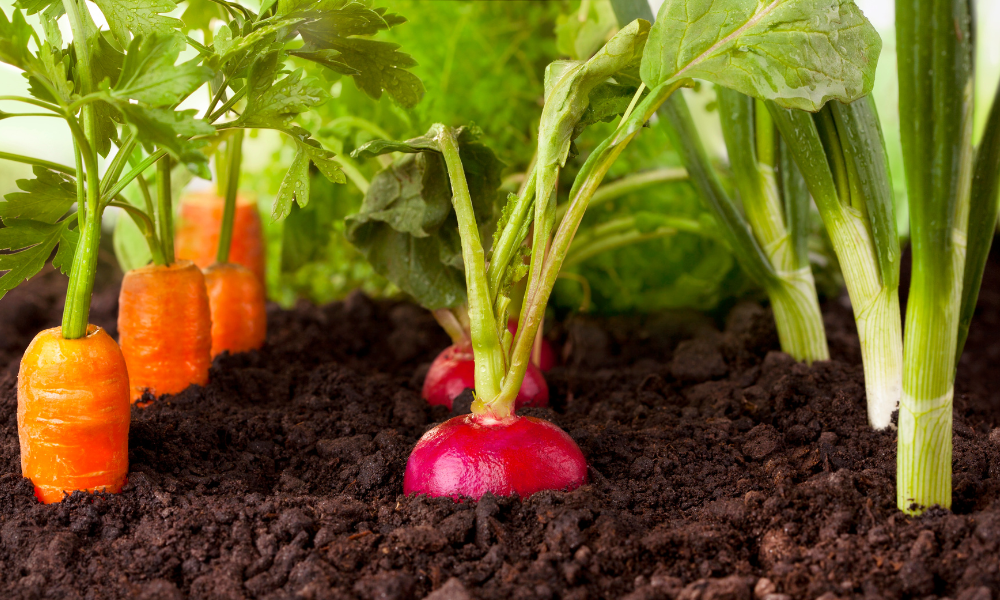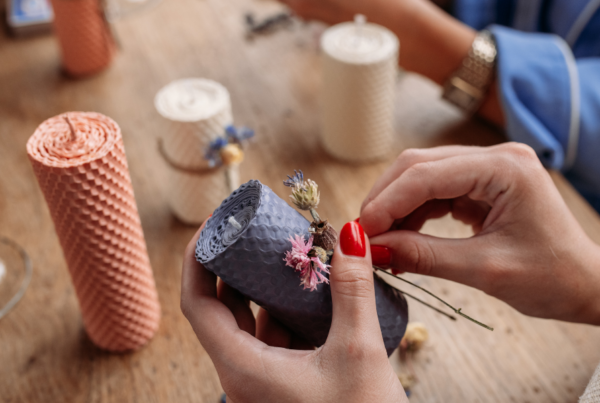We need vegetables. They are packed with essential nutrients, vitamins, and minerals that we just can’t get from other foods. Vegetables support overall health and help prevent chronic diseases. Their high fiber content aids digestion, promotes satiety, and contributes to a balanced diet.
Did you know that if you grow them yourself, you can eat more nutrient-rich and tasteful vegetables than you can get at the grocery store for a fraction of the price? And you can even grow healthy foods in your own kitchen in just a few days!
Here are the benefits of growing your vegetables at home, how to pick and start your plants, and some tips for doing it well.
The Benefits of Growing Your Own Food
Growing your own food can be a rewarding and satisfying experience. Not only does it give you control over the quality and safety of your produce, but there are several other benefits that home-grown food can provide.
Growing your produce saves you time and money. This is especially helpful when you don’t have the time or resources to travel to the grocery store. Also, having access to fresh fruits, vegetables, herbs, etc. can be rewarding in itself, since they retain more flavors, nutrients, and vitamins than their store-bought counterparts. And you won’t have to worry about ingredients and other additives that could be used to preserve store-bought produce.
Gardening is a great way to reduce stress and boost mental health. Whether you enjoy the process of planting and tending to your plants or just the satisfying feeling of harvest time, gardening can be a great way to get away from the hustle and bustle of everyday life. It’s also one of the best free or cheap activities to do with kids. It provides the opportunity to teach them the importance of healthy eating and instill a love of nature.
Finally, growing your own vegetables is a great way to reduce your carbon footprint. Growing your produce isn’t just good for your family’s health—it’s good for the environment, too. It truly reduces your dependence on pre-packaged, store-bought food.
Picking the Right Plants
Choosing the right plants to grow is vital. Factors such as temperature, humidity, size, and maintenance all come into play. Most importantly, you don’t want to choose plants that take a long time to produce. Here are some plants that grow quickly:
- Salad Greens: Choose varieties of lettuce, spinach, chard, and kale for a quick and easy harvest. These greens prefer cool weather and should be sown in early spring.
- Herbs: Herbs are easy to grow and make great additions to many dishes. They are especially popular because they can be grown indoors in a small area. Herbs such as dill, basil, cilantro, rosemary, chives, and parsley can be harvested within 2-4 weeks of sowing.
- Radishes: As one of the quickest vegetables to grow, radishes can be ready to eat within a month. Choose between root varieties like French Round, Globe, and Chinese Red Meat Radish.
- Carrots: Carrots are a great choice for gardeners, as they can be planted in colder weather. Sow seeds in late winter, and harvest 4-6 weeks later.
- Beans: Although beans take longer to reach maturity than other plants, they are still quick to harvest. Pole beans are especially easy to grow, and can be ready for picking in two months.
- Tomatoes: Tomatoes are a favorite summer vegetable that can be enjoyed for months. Cherry tomatoes, beefsteak tomatoes, and heirloom tomatoes are all quick-growing and delicious varieties.
- Eggplants: Eggplants can be harvested before they reach full maturity to provide you with a unique addition to your summer dishes.
Make sure to read and follow the instructions for planting and upkeep to ensure a successful crop. Consider the weather in your area and the available space that you have. With the right planning and care, you can easily have your own quick-growing edible garden in no time!
How to Get Started
Once you’ve chosen the plants you’d like to grow, it’s time to get started. Here are a few simple steps to get your quick-growing edible plants off to a great start:
Prep your soil: Before planting, make sure that your soil is amended with compost and other organic materials appropriate for what you’re planting.
Plant at the right time: Keep in mind that some plants prefer cooler weather, while others need more heat. Make sure to sow your seeds only when the temperature is right to ensure they germinate and thrive. A good way to gauge what to grow when is to know what hardiness zone you are in. You can use the USDA website to figure this out.
Get a leg up: Many quick-growing plants will do well if you start them in pots indoors before transferring them to the garden. This allows you to get a head start on the growing season.
Water daily: Make sure to keep your plants well-hydrated. Quick-growing vegetable plants should be watered daily during hot summer days.
Once you’ve got your quick-growing edible plants planted and ready to grow, you’ll be harvesting in no time. You can enjoy the fruits of your labor and marvel at how quickly you can have a tasty garden-fresh meal on your table.
Tips for Success
Growing your own edible plants doesn’t have to be difficult. Here are some tips that you can use to ensure that you have a successful and abundant harvest:
Start with quality seeds: Make sure you purchase high-quality seeds from a reputable source. This will help to ensure that your plants will germinate faster and remain healthy while they grow. Another way to save money with gardening is to keep the seeds you get from your crop this year and use them next season.
Give your plants enough sunlight: Sunlight is the primary source of energy for plants, so make sure that you place them in a location that receives enough of it. Most edible plants need 6-8 hours of sun each day.
Water regularly: Remember to water your plants regularly to keep them healthy and encourage growth. Make sure that you water them deeply, but don’t overwater them. If you are growing indoors, make sure that your pots have sufficient drainage on the bottom of them.
Transplant when necessary: Once your plants get too large for the pot or container, make sure that you transplant them into larger ones so that they will continue to grow.
Feed your plants: Ensure you feed your plants with the proper nutrients. There are a variety of organic and non-toxic fertilizers and soil additives that you can purchase to help your plants grow stronger and healthier.
Prune your plants: Regularly pruning your plants will help to keep them healthy and promote growth. Not only does this keep them from becoming too tall and lanky, but it will also give more room to fruit.
Growing your own edible plants from home is an excellent way to save money and ensure that you are consuming healthy and delicious food. And it doesn’t have to take a long time. With a few simple tips, you can begin growing your quick-growing edible plants in no time.











